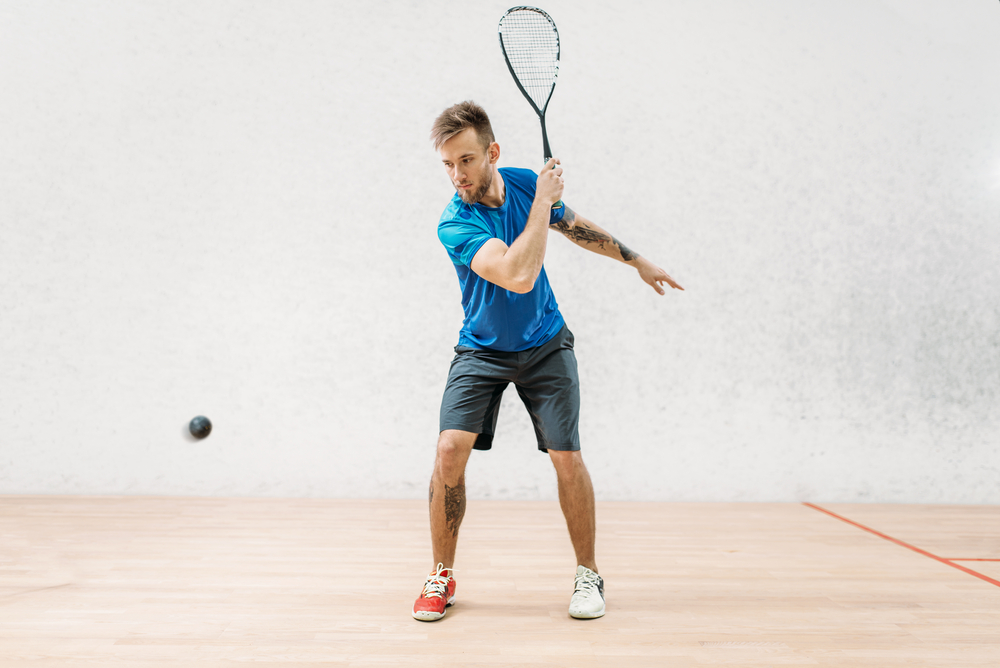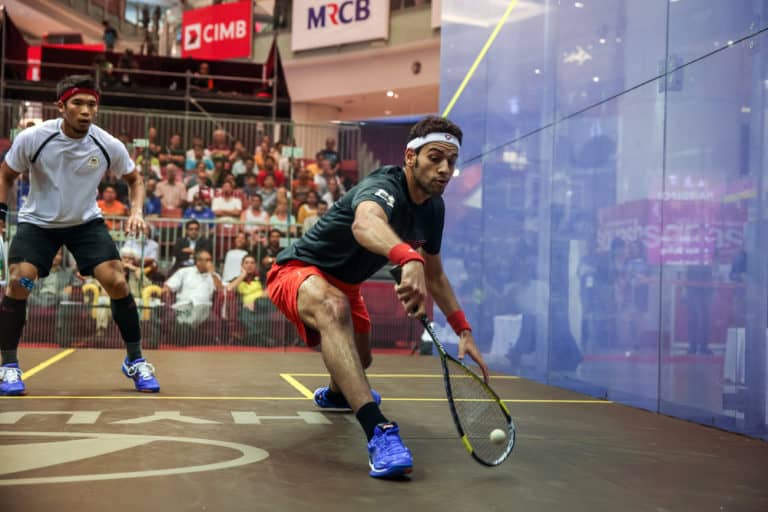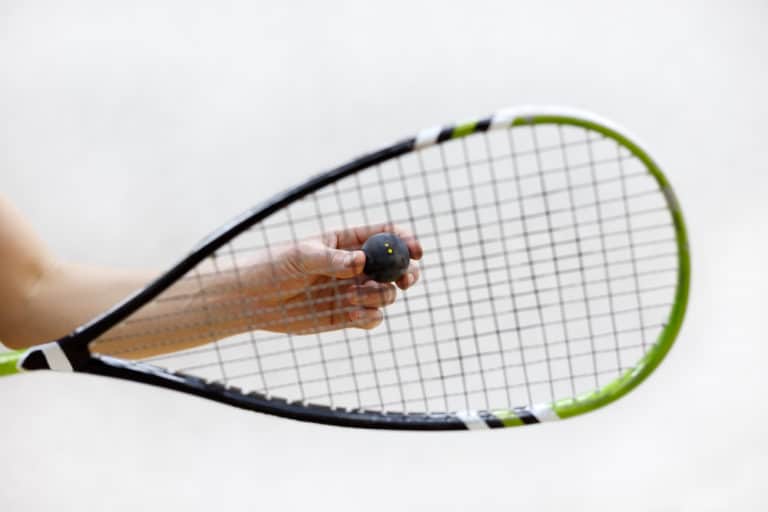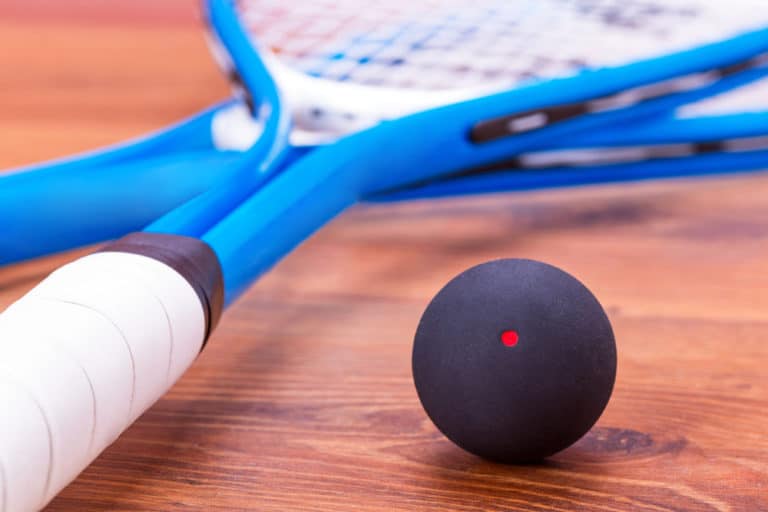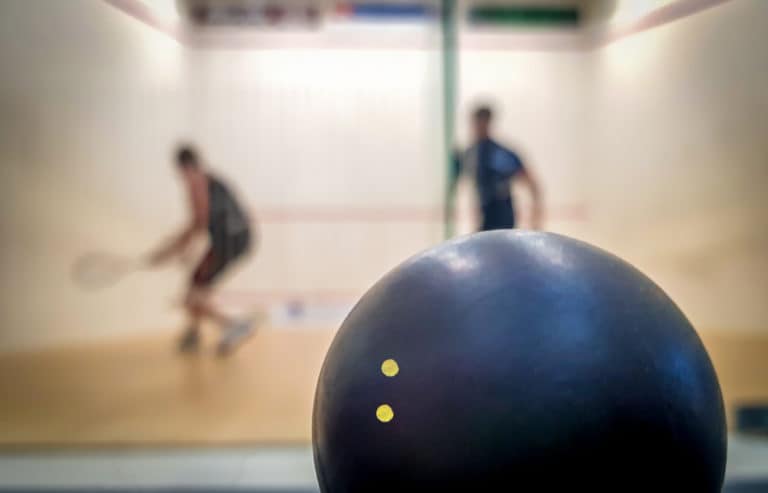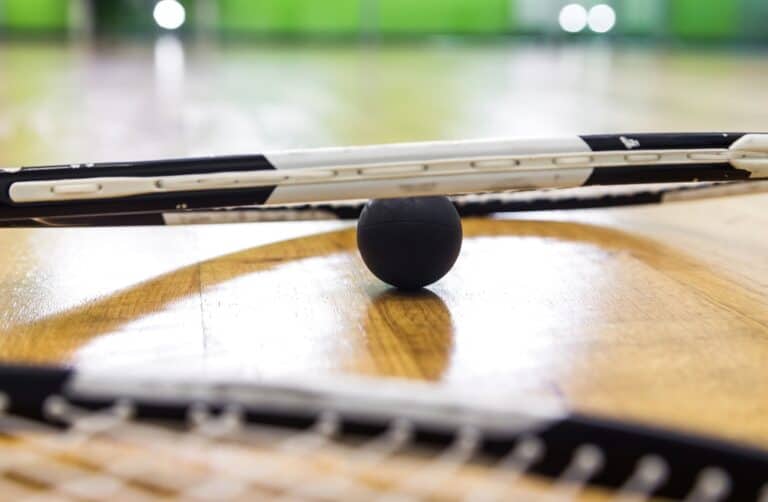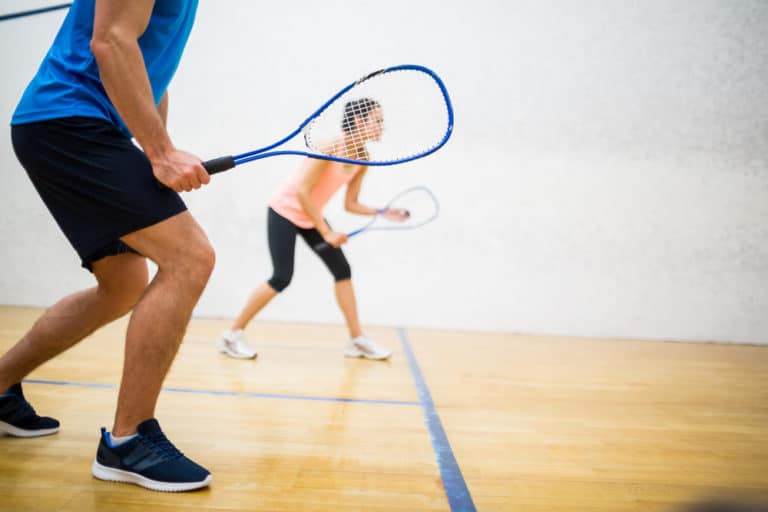What Makes The Perfect Squash Shot?
Squash is as much of a game of skill as it is fitness. In the same way that you’ll need to work on your endurance, strength, and dexterity over time, your skill will also need to improve with experience and practice. And once you’ve played squash for long enough, you’ll slowly start to figure out your preferred shots. For now, however, we’ll look at what makes the perfect squash shot.
In squash, there is no one “perfect” shot that supersedes the rest. Any shot could be considered the perfect one, depending on the situation, intention, and execution of the shot. Whether it is a basic, down-the-line type, or a complicated boast, the perfect shot will be what you need at the moment.
Squash is a strategic game where positioning is paramount. Whether you’re throwing your opponent off guard with a sneaky drop-shot or giving yourself more time to get into a better position by lobbing the ball, any shot could be perfect. Below we’ll investigate what sets “perfect” shots apart from mediocre shots, the various types of squash shots, and how you can perfect them.
The Anatomy Of The Perfect Squash Shot
Squash is an incredible sport that combines various disciplines to create an enjoyable, intense game suitable for almost any age and fitness.
The principal elements of squash are:
- Fitness
- Skill
- Strategy
- Experience
These elements lend themselves to creating the opportunity required to perform the “perfect” squash shot.
When looking for the perfect shot in squash, it’s essential to remember that there is no “one size fits all” shot.
The perfect shot is often a product of several factors, including:
- The situation (your opponent’s skill, experience, and fatigue levels; where either of you is located on the court, and your level of skill, fitness, and fatigue).
- Your intention (what do you want to achieve, how do you want to shift the flow of motion in the game. Where do you want to set your opponent up so they miss this or the next shot? Do you need to buy yourself some time to get to a better position to counterattack?).
- The execution (your skill, ability, experience, and how well you can combine these other variables to produce the desired outcome).
What Differentiates A Perfect Squash Shot?
Although amazing, complex shots require tremendous skill to execute if you’re not playing with a particular strategy in mind or paying attention to where your opponent is, deploying these prestigious plays might be futile.
I.e., you might do a perfect drop shot to the front of the court, but if your opponent is within range and gets to it easily, you will most likely end up disadvantaged after the shot.
Any shot becomes “average” if it ends up in a place the opponent can easily reach, like the middle of the court or in the same corner they are in.
Perfect Shots Need To Set Up The Win
A perfect shot needs to set you up to win the rally, either with that shot, the opponent’s forced error, or your next shot because your opponent is out of position.
Execution Is Critical To The Effectiveness Of A Squash Shot
A well-executed shot should be hard enough for the ball to reach the front wall and then move to a point in the court where your opponent is not ( and will struggle to get to).
A well-executed shot is accurate. Although your opponent may sometimes force you into a corner, perfect shots break their advantage and give you the upper hand.
They remain in the court and deliver the outcome of your desired intention.
Even as defensive shots, a perfect shot is not only “playing the ball,” it is played to gain the advantage or win the rally.
The Different Types Of Squash Shots
To better understand what the “perfect” shot could look like in squash, we first need to explore the various shots one plays during a squash game.
The Straight Drive
The “bread and butter” shot of squash. You’ll spend many hours practicing your straight drives. Although they are simplistic and require little “technical skill,” this shot takes significant practice to master.
As the name implies, a straight drive is when you hit the ball directly toward the front wall with a forehand or backhand. The ball then comes down the court without touching the walls.
The Pros
The straight shot is a powerful shot that usually runs the length of the squash court. This shot usually places the ball at less than an inch along the wall when properly executed.
By varying your power and putting a backspin on the ball, you can increase or decrease the distance the ball travels.
When expertly executed, you put the ball against the wall so the opponent can’t return it (easily). It terminates in the back corner with a minimal bounce off the back wall, preventing the opponent from returning it.
The Cons
This shot is “basic” and easy to recognize, allowing your opponent the opportunity to counterattack.
When not against the wall, this shot is easy to return.
How you hit the ball determines if it goes out as it travels to the back of the court.
When You’d Use It
Most of the shots you play in a game are straight drives around the court.
They are ideal when your opponent is in the front of the court, and you want to drive the ball to the back corner.
The Boast Shot
A boast shot in squash is when you hit the ball, and it strikes the side wall before touching the front wall. The ball hits the side wall either in the front just before hitting the front wall or at the back of the court, then the ball travels the length of the court to hit the front wall.
The Pros
A boast can often get you out of a tight spot when other shots are not feasible.
A wrist flick is often all that’s needed to perform a boast. A well-executed and positioned boast shot has the potential to throw your opponent off by subverting their expectations of where the ball will land.
The Cons
A boast is usually quite easy to read, especially if you’re using it defensively, and it often puts the ball in an opportune position for the opponent to counterattack.
When You’d Use It
This shot is often the “oh sh!t” shot because it is usually the only shot possible when you’re squeezed into a corner and a straight drive is impossible.
However, a boast shot is great for setting up your opponent. By hitting across the court and boasting off the wall close to the front, you reduce the ball’s momentum, acting as a drop shot.
A boast is also possible when standing in front of the court (called a “squeeze boast”). You play the ball onto the side wall, which hits the front wall, and travels to the opposite back corner.
Another variation of the boast is off of the back wall (opposite the front). The ball transverses the length of the court to land low on the front wall.
The Skid-Boast Shot
Another boast variation, this shot is a bit more complex. You’ll hit the ball from the back of the court so that it strikes high on the side wall.
The ball then bounces to a spot high and central on the front wall, then travels diagonally (cross-court) down the length of the court to the opposite side wall (at the back of the court).
The shot bounces around the whole court, creating a (sort of) triangle shape.
The Pros
As confusing as this shot sounds, it is to follow. A well-executed skid-boast is difficult to read and often throws an opponent completely.
The Cons
This shot is challenging to execute and even more challenging to execute well.
There is great potential for this shot to go out/wrong.
When You’d Use It
This shot is usually not a defensive type and needs to be well-thought-out.
However, it is a great shot when the opponent is on the “T.”
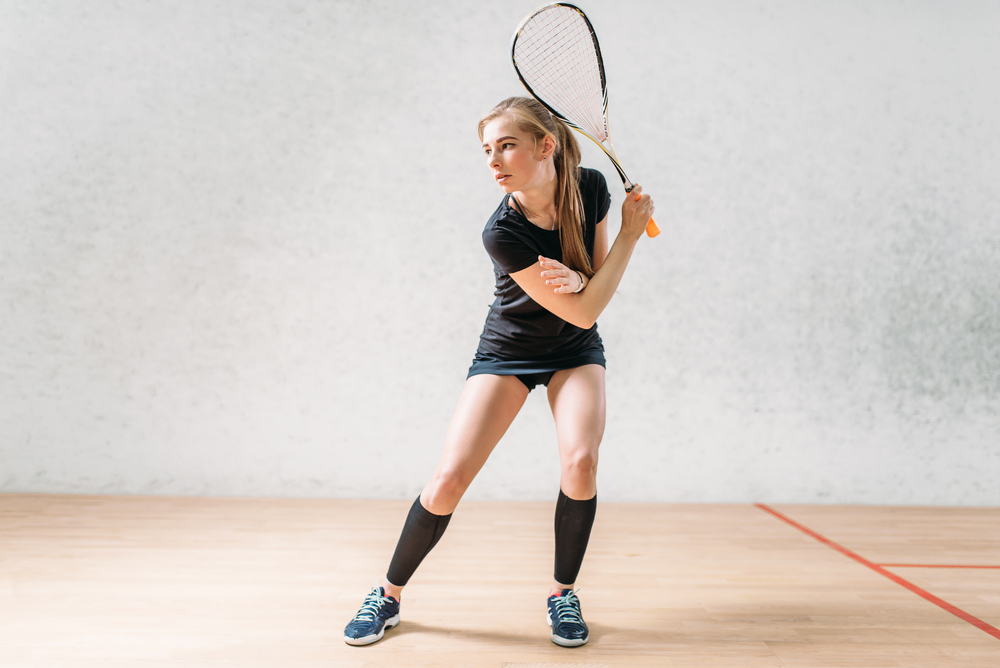
The Cross-Court Shot
A variation on the straight drive. The cross-court shot consists of hitting the ball from one corner, down the length of the court, where it bounces off the front wall and moves towards the opposite corner.
The Pros
An opponent caught unawares is often beaten by a cross-court shot, and an opponent returning from the front section of the court might struggle to run the distance to the opposite corner.
The way the ball enters the corner is usually awkward to get behind, requiring a defensive boast shot.
A hard and low cross-court shot into the corner is very effective.
The Cons
A cross-court shot going awry is easy to volley.
Cross-court shots don’t work well when the opponent is on the “T,” and they risk going out as they travel across the court (depending on the height).
When You’d Use It
Cross-court shots are versatile; you could use them when the opponent is on the opposite side of the court to where you’re aiming.
You shouldn’t play this shot when the opponent is on or close to the “T.”
The Drop Shot
Drop shots are “soft” (alternatively hard with backspin, also called a “Kill Shot”)and low squash shots, designed to hit the front wall as low as possible and go dead as quickly as possible.
The Pros
The well-delivered drop shot makes the perfect “finisher.”
A well-placed drop shot is almost impossible to reach, and unsuspecting opponents (especially after a service) are often thrown off.
The Cons
A drop shot is quite difficult to execute well. While aiming for just above the “tin” (the bottom line and area below) on the front wall, you risk the ball going out.
A drop shot your opponent manages to return puts you at a disadvantage because they could also perform one (re-drop).
When You’d Use It
Drop shots are usually strategic shots that you perform when your opponent is unsuspecting or not in a position to return the shot.
You could occasionally perform a drop shot as a return on a serve. As your opponent runs to the “T,” a drop shot means they’ll need to change direction quickly.
The Lob
A lob is a softer shot aimed higher on the front wall that glides in an arc to the back of the court, ideally over the opponent’s head.
The Pros
A well-timed lob beats an opponent’s reach and lands low, with minimal bouncing off the back wall.
Lobs work well in the long game in wearing down your opponent by making them move all over the court, especially when combined with boasts and drop shots.
The Cons
The lob is usually a slower shot, which might give a more perceptive and athletic opponent time to get behind the shot.
Lobbing the ball often risks going out at the back of the court.
When You’d Use It
A lob is perfect for getting over an opponent’s head, especially if they are in the front area of the court (after returning a boast or drop shot).
The Philadelphia Shot
A Philadelphia shot is another complex shot. From the back left corner (for example), you’ll hit the ball across the court to high on thefront wall (the right side). The ball will bounce high onto the front of the right side wall.
From here, the ball will travel to the back left side wall, where it strikes the wall and bounces off to the right, traveling parallel to the back wall. This shot makes a “Z” shape across the court.
The Pros
Like the skid-boast, this multifaceted shot is disorientating for an opponent, and a well-executed Philadelphia is considerably difficult to reach and return.
It is also useful when an opponent is in on the “T.”
The Cons
This complex shot requires a great deal of skill and the ability to put a spin on the ball. Putting sufficient spin on the ball is essential for this shot.
There are many opportunities for this shot to go wrong and out of play.
When You’d Use It
When you’re skilled enough to play the Philadelphia shot, you probably won’t need to ask, “when should I play a Philadelphia?” This shot is ideal for when an opponent is on the “T,” at the front of the court, or returning from the back of the court.
The Volley
A volley is a general term for when you hit the ball before it touches the ground/bounces. Once the ball comes off the front wall, you’ll play a shot to the front wall or as a boast.
The pros
A well-executed volley throws the opponent completely off guard. They are quick and often difficult to reach.
The Cons
A volley is usually difficult to control, and the chance of it going out or directly into the middle of the court is high.
When You’d Use It
A volley is a suitable shot when an opponent plays a highball, cross-court, serve, straight shot, off of a service, or many other situations, provided you are in a good position to execute the volley.
There are several variations on the volley, including a drop-shot volley (where the ball hits the front wall and goes dead after minimal bouncing) and a type of volley that becomes a boast by striking the front wall and bouncing onto the side wall before dropping “dead.”
Another adaptation is the “Mizuki,” where you change the angle of the racket to give the ball a different spin and change its direction.
Any Squash Shot Could Be Perfect With Practise
The fundamental factor in determining a perfect shot is the amount of practice you put in.
The most basic, straight drive down the line can be the most powerful and effective shot in your repertoire if it is well executed and positioned.
A ball that travels the length of the court, a hair’s breadth from the wall, until it terminates in the corner is as devastating as any other fancy shot.
Conclusion
There is no one “perfect shot” in squash. Rather, any shot has the potential to be a perfect shot; provided you position the shot well, you work with a strategy, and your execution of the shot is good. A perfect shot sets up the win while putting your opponent at a disadvantage. It is the best shot for the situation that you’ve practiced enough to play effectively. Even a straight drive could be the perfect shot when played well.

